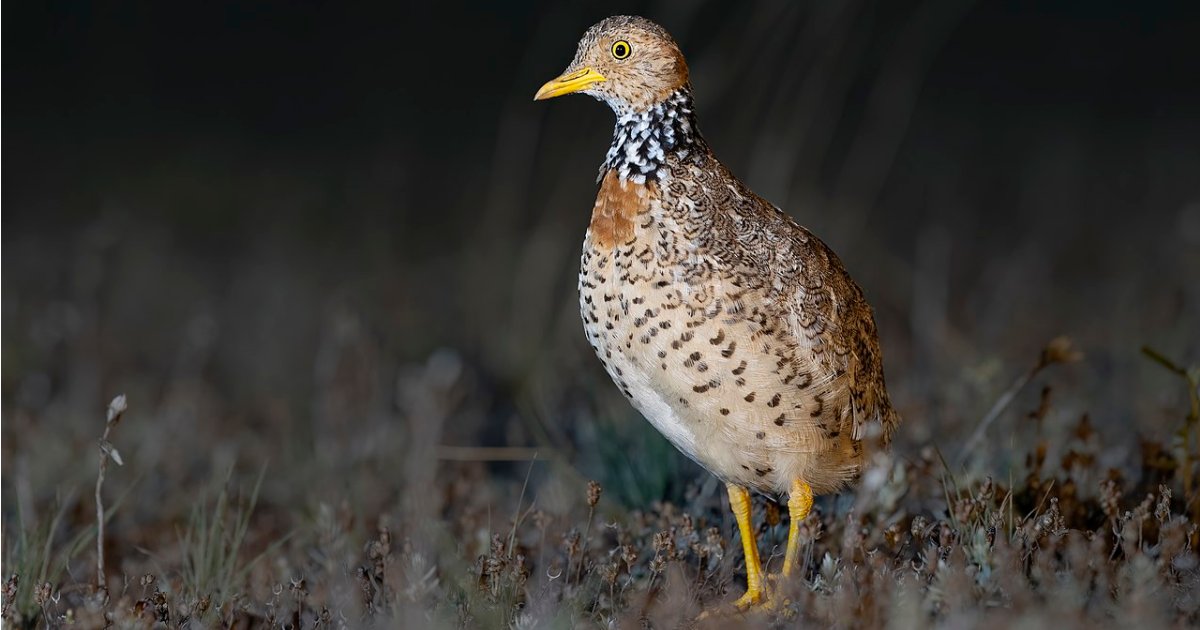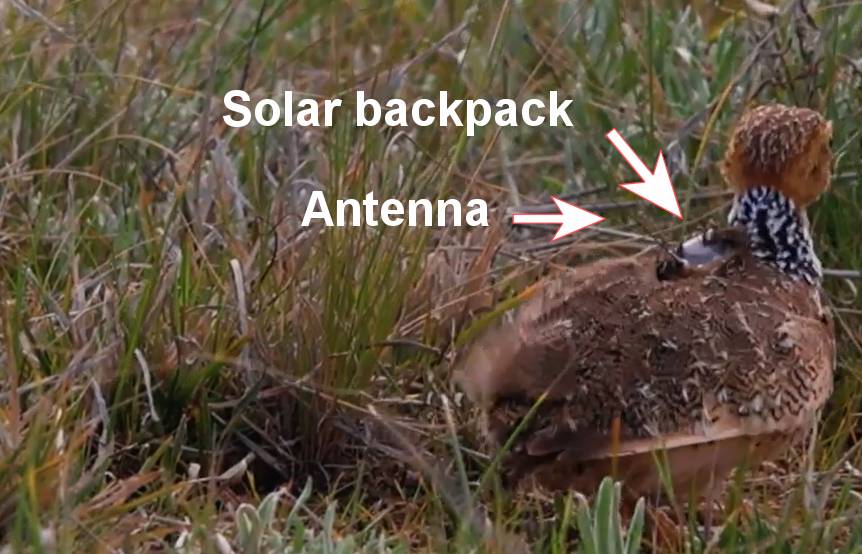
Image: Plains-wanderer by JJ Harrison, CC BY-SA 3.0
The habits of one of Australia’s rarest birds are being tracked with the assistance of tiny solar powered “backpacks”.
The Plains-wanderer (Pedionomus torquatus) is a ground-dwelling quail-like bird that stands 12-15 cm tall and weighs 40 to 95 grams. It lives in semi-arid, lowland native grasslands and the bird’s plumage patterns make it very difficult to spot during daylight hours.
The female Plains-wanderer can breed all year round, but once her eggs are laid she wanders off looking to mate again. The male incubates and rears the chicks until they are approximately two months of age, at which point they wander off to do their thing.
While pretty well-camouflaged, that hasn’t been enough protect the Plains-wanderer from the impacts of habitat loss ( conversion of native grasslands to pasture or croplands), knock-on effects of pesticide use and predation from feral species such as cats and foxes.
It’s a finicky bird, very particular in where it will live. Once quite common in those areas, the Plains-wanderer is now critically-endangered – around 1,000 birds are estimated left in the wild. Extinction would mean the world loses the only remaining species in the genus (Pedionomus). The majority of the remaining population lives in the Riverina region of New South Wales.
Solar Power Enlisted In Protection Efforts
Seeking to better understand habits of the species and as part of a conservation effort between the NSW, SA and Victorian Governments, fifteen Plains-wanderers have been released into Oolambeyan National Park in the NSW Riverina accompanied by some high-tech kit powered by solar energy.
Each bird has been fitted with a solar-powered backpack that will be able to provide data for up to two years via satellite tracking. I would have posted an image of solar backpacks and some tech specs, but alas, I couldn’t find any further information at the time of writing. I’ll update this post if more details come to light.
—
Update September 20. Not a great pic (grabbed from a Zoos Victoria video released yesterday), but here’s a look at the setup.

Image: Zoos Victoria
—
Previous tracking efforts have been limited by a 12-week backpack battery life, and required researchers to be within range of the transmitters to collect the data.
“These solar-backpack wearing Plains-wanderers are paving the way for us to gather important data, which will ultimately help us improve our conservation efforts for wild populations into the future,” said NSW Environment Minister James Griffin.
Eleven of the birds came from a breeding program at Taronga Western Plains Zoo in NSW, three from Monarto Safari Park in South Australia, and one from Werribee Open Range Zoo in Victoria. Hopefully there won’t be any state rivalry based biffo between them.
It hasn’t all been bad news recently for the Plains-wanderer, with back-to-back La Niña cycles responsible for what’s been described as a “population boom“. With a third underway, perhaps that will help further boost numbers.
You can learn more about the Plains-wanderer here.
This isn’t the first time solar power has been utilised to help track movements of endangered birds in Australia. For example, late last year we reported on Bushy the Australasian Bittern’s solar bling.

 RSS - Posts
RSS - Posts



Speak Your Mind